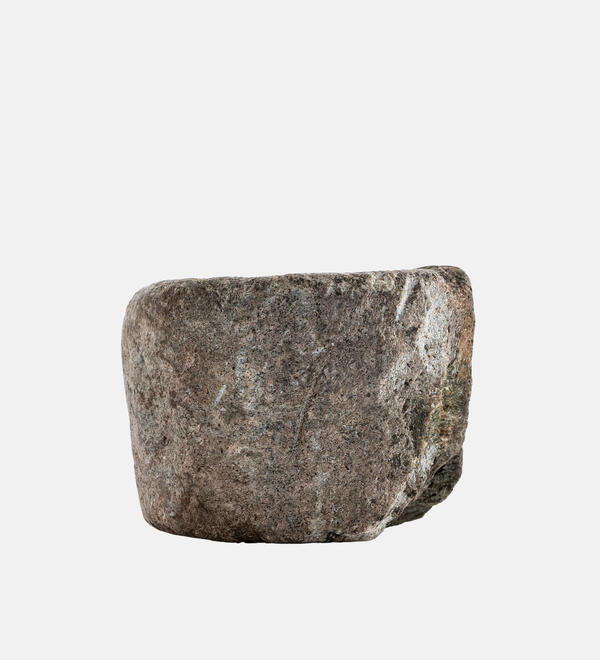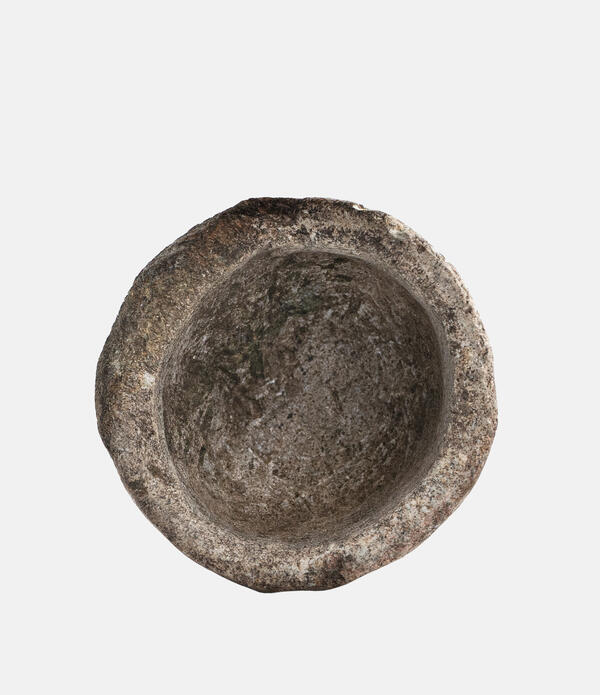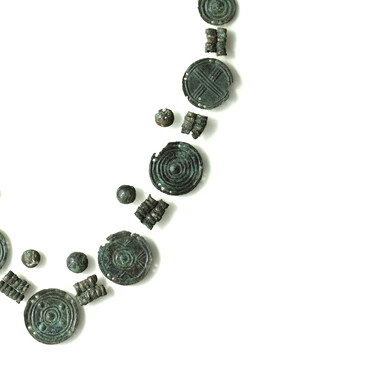The exhibition of the Chelyabinsk State Historical and Archaeological Museum-Reserve “Arkaim” presents a stone crucible. In 2003, an archaeological expedition of Chelyabinsk State University and the Museum-Reserve “Arkaim” led by Elena Kupriyanova conducted conservation excavations at the monuments of the Bronze Age. The settlement Stepnoye VIII and burial ground Stepnoye VII are located on the left bank of the Uy River, 300–400 meters east of the village fence of Stepnoye, Plastovsky district, Chelyabinsk region.
The excavations continued the research work on these sites, which were being destroyed by the quarry. In the course of the work, several burial structures were uncovered and layers of the Bronze Age settlement were exposed. A unique stratigraphic (from Latin stratum — layer and Ancient-Greek γράφω — write, draw, paint) situation developed at the site: the settlement of the Final Bronze Age Stepnoye VIII practically superimposes on the burial ground of the Late Bronze Age Stepnoye VII. The archaeologist Elena Kupriyanova explains it by the rapid meandering (deformation) of the bed of the Uy River, which forced the inhabitants of the settlement to move their dwellings to the ancient cemetery. During the excavations of the burial ground, the housing structures of the settlement were practically unaffected, and the ash pits containing garbage and waste products that had been taken outside the dwellings were examined. Among the finds are animal bones, as well as ceramic, stone, bone and bronze items.
One of the unique discoveries is a stone pot made of pyroxenite. The pot was found in the ash layer in the northeastern corner of site D/4. On one side of the outer surface there are three parallel vertical leaf-shaped incisions, 0.7–0.9 centimeters long. Inside, the surface of the pot is smooth. The concave bottom is rounded. The piece is 4.5–5 high; the diameter of its bottom is 5.7 centimeters and that of its neck is 6.5 centimeters. The stone pot found at the Stepnoye VIII settlement represents a crucible, a technological utensil used for metal production. Artifacts related to metal production (casting molds, muzzles, crucibles, stone hammers, slag, ore) represent a significant part of the collections from the settlements.





